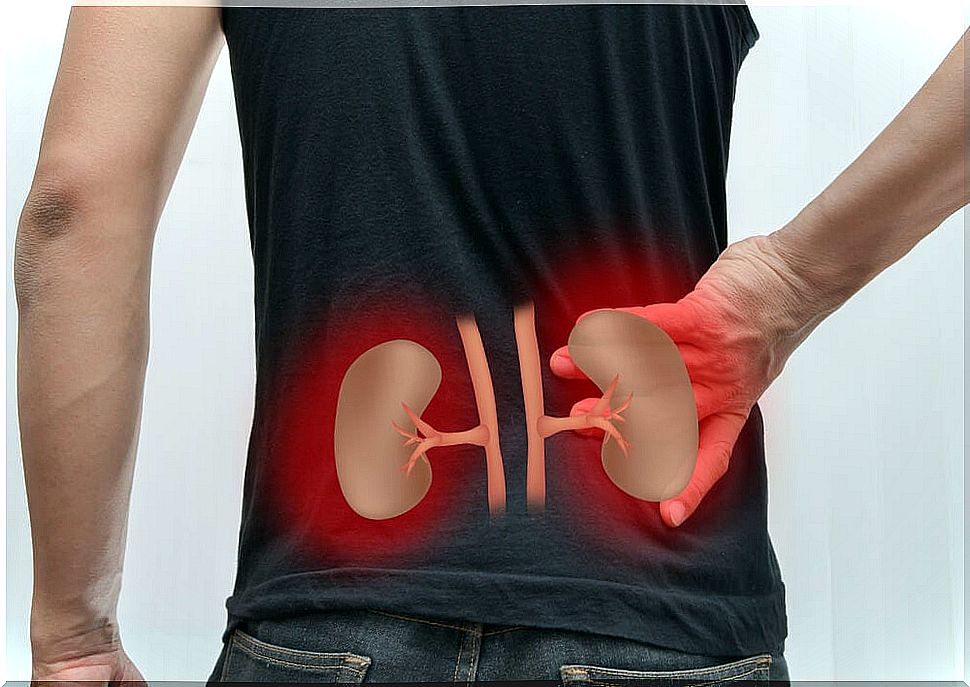Chronic Kidney Failure
Chronic kidney failure is an emerging disease associated with very common pathologies such as diabetes or hypertension.
Chronic kidney failure is a disease that affects the kidneys. These are two organs, located in the lower lumbar area, that are part of the urinary system. These are located on both sides of the spinal column and are supplied by the renal arteries. On the other hand, it is interesting to know that, anatomically, the left kidney is closely related to the pancreas.
The kidneys are connected through the ureters to the bladder, which in turn connects to the urethra. Among its main functions are:
- The excretion of waste substances through the urine.
- PH regulation.
- Regulation of acid-base balance.
- Erythropoietin production.
- The synthesis of vitamin D.
What is chronic kidney failure?

Chronic kidney failure is characterized by the progressive deterioration of all kidney functions. This is due to a progressive and irreversible loss of functioning nephrons, which causes the glomerular filtration rate to be permanently reduced. The most common causes of chronic kidney failure are the following:
- Diabetes mellitus.
- High blood pressure.
- Some glomerulonephritis.
Chronic kidney failure has no clinical manifestations until the loss of nephrons does not exceed 70% of the total; since in intact nephrons a series of compensatory changes take place. These changes promote glomerular filtration and other tubular functions.
Clinical manifestations
First, there is an increase in urination (polyuria) and the need to urinate at night (nocturia), by decreasing the reabsorption of water. This causes an increase in plasma levels of urea and creatinine. Then, uremic syndrome appears , a consequence of the retention of toxins by decreasing glomerular filtration <15 ml / min. Accumulated urea is responsible for several symptoms:
- Sickness
- Threw up
- Loss of appetite.
- Appearance of uremic fetor (bad breath).
- Alterations in the state of consciousness (lethargy, drowsiness).
- Hyperpigmentation of the skin, due to accumulation of urochromes.
In addition, as a consequence of the loss of kidney functions, the following occurs:
- Anemia
- Thrombopenia
- Bleeding
- Arterial hypertension.
- Fluid retention.
Who is affected by chronic kidney failure?

The prevalence of the disease is 15% at 60 years of age, while at 84 years of age it is around 50%. In this sense, chronic kidney failure is more common in women than in men. Even so, in the 60-65 age group, the differences are not very significant.
Diabetes, hypertension and other cardiovascular diseases are predisposing factors. Among all of them, it has been proven that hypertension is the factor most associated with kidney damage. Also, tobacco use and obesity are related to the development of chronic kidney failure.
Diagnosis
In order to make a diagnosis, the first thing to do is review the patient’s history. For this, it is important to emphasize the possible existence of concomitant diseases.
After the evaluation of the clinical history, a physical examination of the patient should be carried out to be able to evaluate what conditions they present and which they do not. Depending on the conditions, laboratory tests should be requested, since these allow obtaining the necessary values to complete the evaluation. In these types of tests, attention should be paid to the following:
- Analytics. In these cases, a gradual rise in blood creatinine and urea levels can be observed. In acute kidney failure, levels rise suddenly.
- Renal ultrasound. In it you can see a decrease in the size of the diseased kidney.
Treatment

First, it is essential to keep all possible concomitant diseases under control. Afterwards, it serves as a preventive method. In the final stages, it is part of the therapy, which attempts to prevent progress to a terminal state.
Control of blood pressure is carried out using angiotensin converting enzyme (ACE) inhibitors or angiotensin receptor antagonists (ARBs) since they are the two types of drugs that slow down the disease.
- Low protein diet. Delays the onset of symptoms of uremic syndrome. These diets must be handled with care by specialists, they should never be done freely, since there is a risk of malnutrition.
- Vitamin D and erythropoietin ( EPO) supply.
- It may be necessary to implement a treatment to remove accumulated phosphates.
All these measures are aimed at avoiding the terminal phase, in which renal replacement therapy is necessary. Once achieved, these patients must undergo dialysis, waiting for a transplant if it is a candidate. In the most serious cases, hemodialysis or even kidney transplantation is used.









